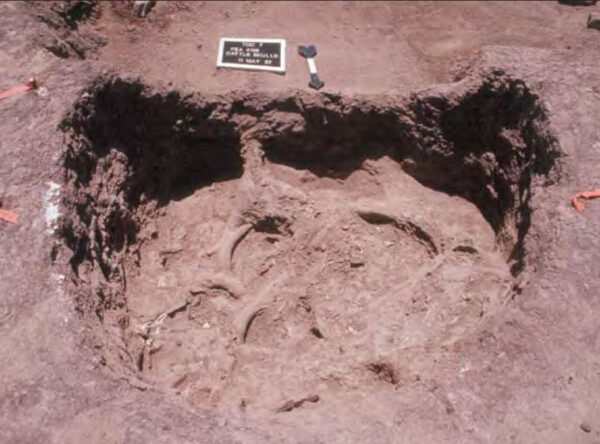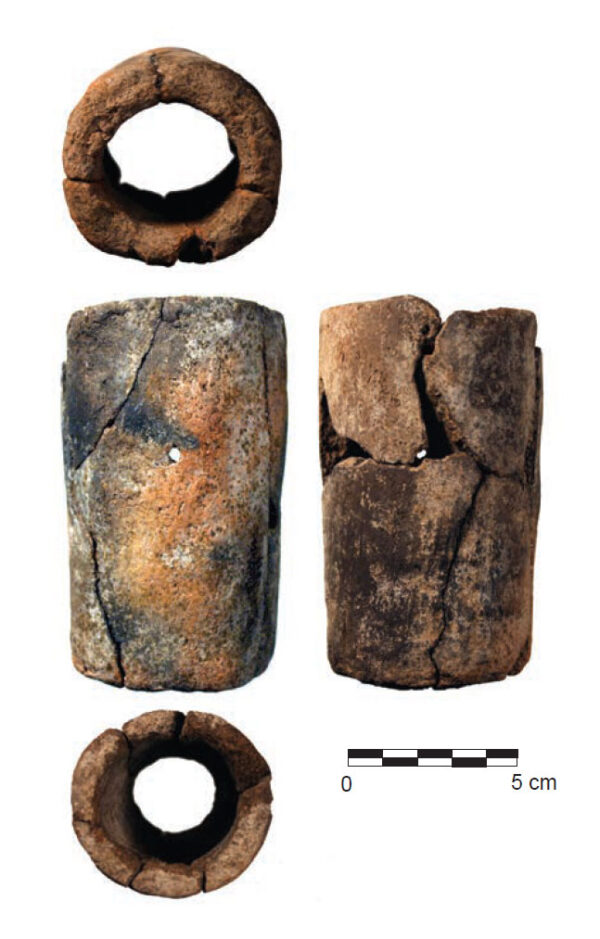
Well, Well, Well: Obtaining Water at the Mission Site
Water is the the desert’s most precious resource. As modern communities in the West grapple with dwindling supplies, Homer Thiel explores how people living near Tucson in the mid-19th century acquired water for their homes and gardens.
People need water for drinking, cooking, washing, and watering plants, among other uses. Today we turn a faucet in our kitchen or bathroom and water pours out. For people living at the San Agustín Mission site near Tucson during the Territorial period (AD 1856-1912), water could be obtained from the Santa Cruz River and the many small canals that ran off from it. However, this water could be contaminated by other people, animals, and runoff. For the people living in the Mission area, hand-dug wells provided a source of cleaner water.
During work for the Rio Nuevo Project, Desert Archaeology found three Territorial period wells associated with the people who lived next to the San Agustín Mission. What did we learn?
In the 1850s, the family of Dolores Gallardo (circa 1817-1885) and his second wife Trinidad Vilderray (circa 1832-after 1880) and five children lived in the ruins of the Convento building at the Mission. They sold their property there in 1868.
They probably dug the oldest well that we found, which we designated Feature 4156. It was an unlined well measuring 5.8 feet long (1.77 m) by 5.1 feet wide (1.55 m) at its top. Following OSHA rules, we excavated the first five feet, then cut the area back to make a wide step before digging deeper. We excavated to a depth of 7.6 feet (2.31 m) below the modern ground surface. We did not reach the bottom, deciding to leave the rest for some future archaeologist.
A layer of rocks was at the top of the well, representing an effort to close the well shaft. Below that was a layer of cattle bones consisting of at least nine skulls, four scapula, three ribs, and a partial foot. Saw marks on the bones indicate the well was filled in during the Territorial period, when this style of butchering began in Tucson. This may represent the remnants of a feasting event, during which numerous cattle were butchered. Three main feasts were celebrated in Tucson: San Isidro in May, San Juan in June, and San Agustín in August-September.
Other artifacts present included glass bottle fragments, a bead, a copper vessel fragment, and pre-contact artifacts including projectile points.
The walls of this well were unstable and appeared to have started falling in, leading to its abandonment.
In the late 1860s, businessman Leopoldo Carrillo (1836-1890) constructed a house on the south side of Mission Lane. Carrillo was a merchant and built a resort garden nearby, a popular summer spot among Tucsonans. In the late 1930s, the house was documented by the Historic American Building Survey.

A January 1938 photograph by Frederick D. Nichols of the Leopoldo Carrillo House.
The second well, Feature 4087, was brick-lined, constructed from fired bricks manufactured at the site by workers hired by Leopoldo Carrillo. The brick kiln where the bricks were fired was found during a later project nearby.
We were able to completely excavate this well in two stages. The well shaft was three feet square, set inside a four-feet-square shaft cutting through the native cienega clays. The shaft was 9.7 feet deep (2.96 m), showing how high the water table was at that time. The well likely had a wooden building standing over it, with a worn metate (grinding stone) used as the doorsill heading into the structure.
A large amount of trash had been discarded into the well, with the recovered artifacts dating to the 1860s and 1870s. They included a part of a coffee grinder, a trigger guard from an English Brown Bess musket, and several ceramic canales (spouts to drain rainwater from flat roofs).
The third well, Feature 4, was completely excavated. It was unlined and at the top it measured 6.2 feet (1.90 m) long by 5.4 feet (1.65 m) wide. It was 9.2 feet (2.81 m) deep, filled with layers of soft loamy silt and ash. The water level within this well had been about seven feet below the ground surface.
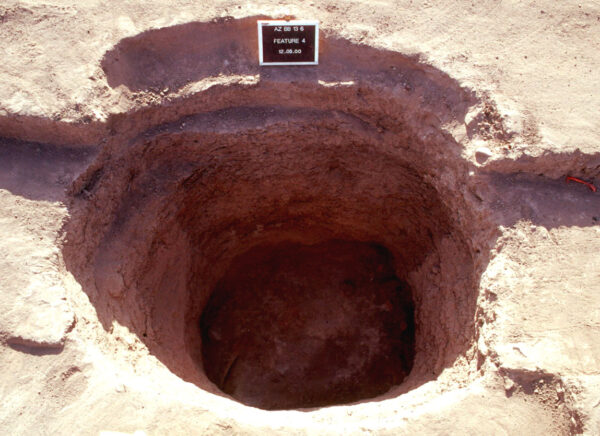
The upper portion of Feature 4, before stripping took place to the five-foot level.
Thousands of artifacts, animal bones, and plant remains were recovered from the shaft. The few datable artifacts indicate the well was filled between 1880 and 1890. A very large number of the artifacts were manufactured in China and these, other artifacts, and the food remains indicate the well was filled in by Chinese gardeners who rented Carrillo’s property in the mid-1880s.
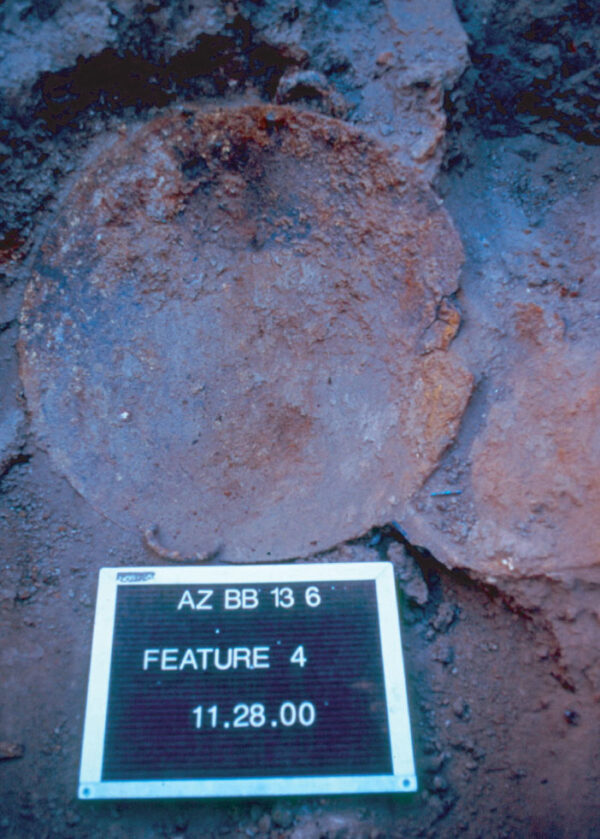
Among the items found in the well was an iron wok.
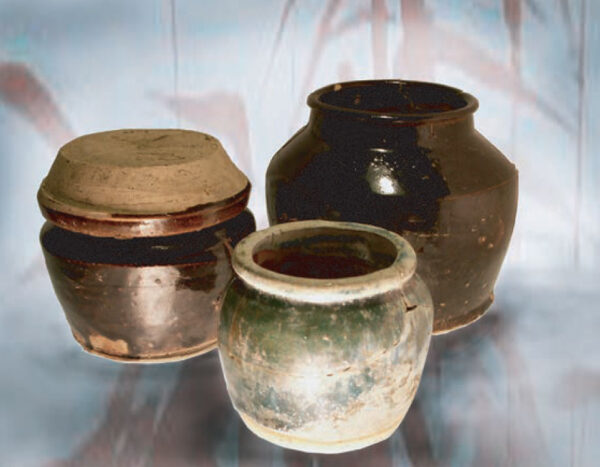
Three stoneware food and sauce jars once held foods that allowed the Chinese gardeners to recreate the diet they enjoyed back in China.
These wells provided information on the depth of the water table during the Territorial period on the floodplain (about seven feet below ground surface) and provided sets of artifacts that illuminated the lives of the Gallardos, Carrillos, and Chinese gardeners.
There were probably other wells used by the people who lived in the Carrillo House, perhaps located to the south in the area destroyed in the 1950s when the city built a landfill.
This archaeological project was funded by the City of Tucson as part of the Rio Nuevo Project.


